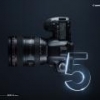
chauffeurdevan
-
Posts
72 -
Joined
-
Last visited
Reputation Activity
-

-
 chauffeurdevan got a reaction from gloopglop in 23.98 / 24fps - What's the difference?
chauffeurdevan got a reaction from gloopglop in 23.98 / 24fps - What's the difference?
In fact, just the difference between 23.98 (what final cut is using ) and 23.976 (what everything else is using) is quite big. When you have time code burn in your footage and when you are starting your edit at 10:00:00:00, you can have a lot of frame differences here and there.
Had this problem 2 years ago when a client worked in fcp (23.98) gave me the project so i can import it in AE (in 23.976)... lost a few days of work when I saw everything was off-sync (a 1h30 feature film with hundreds of cuts)
-
 chauffeurdevan reacted to ScreensPro in Dear Nikon...
chauffeurdevan reacted to ScreensPro in Dear Nikon...
I assume you didn't live through the years before that... Lugging around s35mm adapters and HUGE rigs to try and get something even close to filmic? Paying through the nose for 1/3" sensors and about 7 stops of DR?
Seems like it all came a little too fast, too cheap for you and you are now left wondering why that initial rush has slowed down.
Alot of us are still kind of amazed that we can get really nice quality, full frame cameras like the 5DIII shooting footage that blows clients away (yes, even without a hack).
-
 chauffeurdevan got a reaction from Brellivids in Cloud Cuckoo Land
chauffeurdevan got a reaction from Brellivids in Cloud Cuckoo Land
Excerpt from http://blogs.adobe.com/aftereffects/2012/09/cinemadng-in-after-effects-cs6-and-elsewhere.html
One question that we’ve been seeing a lot–especially since the recent announcements of a couple of cameras–is why Premiere Pro doesn’t import CinemaDNG files. The answer is simply that we have not been satisfied with the performance that we have been able to achieve with CinemaDNG files in Premiere Pro, in which real-time playback is crucial. If it’s important to you that we add native import of CinemaDNG footage into Premiere Pro, please let us know with a feature request so that we can get a sense of whether this is an area where we need to put more effort.
Adobe Feature Request page :
http://www.adobe.com/go/wish
-
 chauffeurdevan got a reaction from OffewMapype in Exploring Nikon D5200 HDMI output - review update
chauffeurdevan got a reaction from OffewMapype in Exploring Nikon D5200 HDMI output - review update
To be noted :
On my post about Bayer and 4:2:2. All I wrote is valid in 1:1 Bayer resolution to final resolution, meaning a 1920x1080 Bayer for a 1080 final resolution.
If you have higher resolution Bayer this change. Ideally, a bayer sensor should double (or quadruple) the final resolution, eg. 3840x2160 for a 1080 video. From there, you could get a nice 4:4:4 (slighlty oversampled in the green.)
-
 chauffeurdevan got a reaction from peederj in New 5D Raw developments - plus my low light comparison with Blackmagic Cinema Camera
chauffeurdevan got a reaction from peederj in New 5D Raw developments - plus my low light comparison with Blackmagic Cinema Camera
The BMCC sCMOS have a dynamic range quoted at >16,000:1, 14bit is 16,384. So it is not 16 bit unless there is 2bit of noise.
http://www.scmos.com/files/high/scmos_white_paper_8mb.pdf
-
 chauffeurdevan got a reaction from jgharding in Exploring Nikon D5200 HDMI output - review update
chauffeurdevan got a reaction from jgharding in Exploring Nikon D5200 HDMI output - review update
Let's try.
For each photosite in a bayer pattern, you capture luminosity for a certain region of the spectrum. But this is not luminosity as we see human see it. (Think putting a red filter on a b&w film). So for each block of 4 photosite (RGGB) they extrapolate some luminosity as if it was white light using (in REC 709) this formula Y = 0.2126 R + 0.7152 G + 0.0722 B (http://en.wikipedia.org/wiki/Luma_%28video%29). So the luminosity you captured is not perfect.
What you have captured contain 4 samples of color information.
So for the resultant 4 pixels, we have 4 luma info (aproximated) and 4 chroma info.
If we wanted to capture a real 4:4:4 RGB we would need for a block of 4 pixels - 4 greens, 4 red, 4 blue. As each one provide it's part of the spectrum in luminosity, we have 12 samples of luminosity (remember 4 luma for Bayer). (If we converted to 4:4:4 YUV, 4 samples of luma, 8 of chroma)
Now let's go from 4:4:4 to 4:2:2. To go to 4:2:2, we have to convert to YCbCr. For both chroma channel we discard half the information.
So we get 4 samples of luma and 4 samples of chroma.
4:2:2 YCbCr is 8 samples of combined chroma/luma. Bayer is 4 samples. So Bayer is half as good as 4:2:2.
So why 4:2:2 from the uncompressed hdmi out is less good than Raw from the BMCC ? Because first the 4:2:2 you get is from a Bayer Pattern, so you already converted all the data. But you mainly processed the Raw Data to some preformated preset from Nikon, Arri, Sony or Hasselblad - it is not as automatic - far from the dumbest guy using a Raw Converter.
So now is 4:2:2 better than Bayer. Yes. Much better. I would no convert any of my work back to a bayer encoded file. It is that bad.
Look at what it is without any demosaicing :
What would be the best output in my opinion that every camera should have ? Not HDMI of SDI, but a digital raw output protocol, somthing like S/PDIF or AES EBU for audio where you output RAW and you do what you want with it from your external recorder. First, about the same bandwidth for a 16bit RAW Bayer than a 8bit 4:2:2 uncompressed. You'll also be able to convert on the fly using some standard algorithm or proprietary (think Fujifilm). And to whatever codec you need...
-
 chauffeurdevan got a reaction from J.P in Making sense of the new Blackmagic Production Camera and Pocket Cinema Camera
chauffeurdevan got a reaction from J.P in Making sense of the new Blackmagic Production Camera and Pocket Cinema Camera
Watch out, you're mixing Pocket specs with Production 4K specs.
Pocket : Lossless DNG compression
Production 4K : Lossy DNG compression
John Brawley confirmed that the visually lossless compression the 4K is actually lossy compression. However, it should be 12bits. So some Adobe DNG specs update should follow !
-
 chauffeurdevan got a reaction from mtheory in Making sense of the new Blackmagic Production Camera and Pocket Cinema Camera
chauffeurdevan got a reaction from mtheory in Making sense of the new Blackmagic Production Camera and Pocket Cinema Camera
Let's hope he's right.
Where did you find the info on the website ? Looked everywhere, was not able to find anything. The only hint I get is the VISUALLY lossless wording they using on the BMPC and not for the other camera - this is pure marketing wording.
Christine Peterson from Blackmagic on the forums : It's visually lossless, a very slight compression.
So right now, I prefer believing Adobe specs on DNG than Blackmagic wording - and the only "visually lossless" compression that is not lossless is the 8bit JPEG.
So like I said, there could always be some new specs that could be published soon with a 12bit log "visually lossless" compression. Right now, there is not.
Like I wrote on the Adobe forum 6 months ago, I really hope that Adobe would update the specs to include something better than 8bit Jpeg and that was before the BMPC. I now hope even more that Adobe will do it.
-
 chauffeurdevan got a reaction from dahlfors in New Blackmagic Camera
chauffeurdevan got a reaction from dahlfors in New Blackmagic Camera
Right now, people should not be too excited about compressed CinemaDNG.
I asked a few months ago about DNG 1.4 lossy compression bit depth, and what I got is the it is 8bit. In fact, Lossy DNG is a 8bit jpeg.
http://forums.adobe.com/thread/1078247
-
 chauffeurdevan got a reaction from Andrew Reid in Metabones Speed Booster review
chauffeurdevan got a reaction from Andrew Reid in Metabones Speed Booster review
Hope you'll look for medium format to full frame. Would be awesome to have some Hasselblad Zeiss to Canon EF, or even Mamiya 645 to Canon EF. Would blow away any 35mm and smaller lens and they are cheaper and cheaper as film disappear (less and less film roll available on eBay each week).
-
 chauffeurdevan got a reaction from tomekk in Metabones Speed Booster review
chauffeurdevan got a reaction from tomekk in Metabones Speed Booster review
Hope you'll look for medium format to full frame. Would be awesome to have some Hasselblad Zeiss to Canon EF, or even Mamiya 645 to Canon EF. Would blow away any 35mm and smaller lens and they are cheaper and cheaper as film disappear (less and less film roll available on eBay each week).
-
 chauffeurdevan got a reaction from BydrodoFieddy in Exploring Nikon D5200 HDMI output - review update
chauffeurdevan got a reaction from BydrodoFieddy in Exploring Nikon D5200 HDMI output - review update
To be noted :
On my post about Bayer and 4:2:2. All I wrote is valid in 1:1 Bayer resolution to final resolution, meaning a 1920x1080 Bayer for a 1080 final resolution.
If you have higher resolution Bayer this change. Ideally, a bayer sensor should double (or quadruple) the final resolution, eg. 3840x2160 for a 1080 video. From there, you could get a nice 4:4:4 (slighlty oversampled in the green.)
-
 chauffeurdevan got a reaction from jgharding in Exploring Nikon D5200 HDMI output - review update
chauffeurdevan got a reaction from jgharding in Exploring Nikon D5200 HDMI output - review update
Not exactly.
First, each Cb and Cr (could also be UV) channel represent the deviation from gray on an axis ( from wikipedia : CB/PB and CR/PR are deviations from grey on blue–yellow and red–cyan axes, whereas U and V are blue–luminance and red–luminance differences.) (The LAB colorspace is using the same principle)
So for example, the CB/PB channel representation in 8bit is at 0 - blue full saturated, 64 - blue half saturated, 128 - grey, 256 - yellow full saturated.
Second, in the 4-2-2 relationship, the 2-2 doesn't not represent the channels, but samples per row. The sampling formula always seems to be represented on by 4 pixel columns by 2 row. So in a 4-2-2 sampling, for a region of 4 pixel wide (4-x-x) by 2 (the second row - not related to the 2s in 4-2-2), you have on the first row, 2 samples of chroma (for both U and V, or Cb and Cr), and on the second row, 2 samples.
So, on a 4-2-0, on first row, 2 chroma samples of each channels, but no sampling on the second row (it is like have half resolution on both x and y axis of chroma versus luma, eg. 1920x1080 luma resolution, 960, 540 chroma resolution).
In 4-1-1, you have one sampling of chroma on each row (so for a 1920x1080 luma resolution, you get a chroma resolution of 480x1080).
in 3-1-1 sampling, like XDCAM EX and HDCam HD, you have for each 4 pixels of luma in source, only 3 samples of luma at the output, that is why those codec are 1440x1080 with a 1.33 pixel aspect ratio.
-
 chauffeurdevan got a reaction from zephyrnoid in Exploring Nikon D5200 HDMI output - review update
chauffeurdevan got a reaction from zephyrnoid in Exploring Nikon D5200 HDMI output - review update
Smoothness in the bottom image ? What is see is an just an awful lot of noise reduction.
On an image like that, you don't/can't really see the advantage of 4:2:2 over 4:2:0 or 4:1:1.
4:2:2 is not about detail in luminosity, but in chroma. As there is not much chroma information in this image, there is almost no chroma contrast/details/sharpness. We can't say for sure that it is 4:2:2.
The compression artefacts are 4:2:2 but just hoping that the camera is not wrapping 4:2:0 information in a 4:2:2 format.
-
 chauffeurdevan got a reaction from A Y in Exploring Nikon D5200 HDMI output - review update
chauffeurdevan got a reaction from A Y in Exploring Nikon D5200 HDMI output - review update
Not exactly.
First, each Cb and Cr (could also be UV) channel represent the deviation from gray on an axis ( from wikipedia : CB/PB and CR/PR are deviations from grey on blue–yellow and red–cyan axes, whereas U and V are blue–luminance and red–luminance differences.) (The LAB colorspace is using the same principle)
So for example, the CB/PB channel representation in 8bit is at 0 - blue full saturated, 64 - blue half saturated, 128 - grey, 256 - yellow full saturated.
Second, in the 4-2-2 relationship, the 2-2 doesn't not represent the channels, but samples per row. The sampling formula always seems to be represented on by 4 pixel columns by 2 row. So in a 4-2-2 sampling, for a region of 4 pixel wide (4-x-x) by 2 (the second row - not related to the 2s in 4-2-2), you have on the first row, 2 samples of chroma (for both U and V, or Cb and Cr), and on the second row, 2 samples.
So, on a 4-2-0, on first row, 2 chroma samples of each channels, but no sampling on the second row (it is like have half resolution on both x and y axis of chroma versus luma, eg. 1920x1080 luma resolution, 960, 540 chroma resolution).
In 4-1-1, you have one sampling of chroma on each row (so for a 1920x1080 luma resolution, you get a chroma resolution of 480x1080).
in 3-1-1 sampling, like XDCAM EX and HDCam HD, you have for each 4 pixels of luma in source, only 3 samples of luma at the output, that is why those codec are 1440x1080 with a 1.33 pixel aspect ratio.
-
 chauffeurdevan got a reaction from ScreensPro in 1D X has traces of 1D C firmware but Magic Lantern 'will never touch 1D series' as Canon threatens potential hackers with legal trouble
chauffeurdevan got a reaction from ScreensPro in 1D X has traces of 1D C firmware but Magic Lantern 'will never touch 1D series' as Canon threatens potential hackers with legal trouble
http://web.canon.jp/imaging/eosd/firm-e/eosdigital7/firmware.html and others...
You shall not assign, sublicense, sell, rent, lease, loan, convey or otherwise transfer to any third party, or copy, duplicate, translate or convert to another programming language the Software, except as expressly provided herein. You shall not alter, modify, disassemble, decompile or otherwise reverse engineer the Software and you also shall not have any third party to do so. You shall not modify, remove or delete a copyright notice of Canon contained in the Software.
Except as expressly provided herein, no license or right, express or implied, is hereby conveyed or granted by Canon to you for any intellectual property of Canon.
2. OWNERSHIP AND COPYRIGHT:
The Software is copyrighted and owned by Canon. You agree and acknowledge that Canon transfers neither ownership interest nor intellectual property in the Software to you under this Agreement or otherwise, and that Canon retains all right, title and interest to the Software.
-
 chauffeurdevan got a reaction from Bruno in 1D X has traces of 1D C firmware but Magic Lantern 'will never touch 1D series' as Canon threatens potential hackers with legal trouble
chauffeurdevan got a reaction from Bruno in 1D X has traces of 1D C firmware but Magic Lantern 'will never touch 1D series' as Canon threatens potential hackers with legal trouble
I simply disagree, on about every point.
First, the price should not be set on production (and must never be the only parameter on price settings. Even more, this is not a product from mass production. When marketing a product like that, the thinking is not of creating a bestseller - you should not set it a price low enough that is will sell five times more. It will cause more problem and more loses on medium/long term than the there is benefits to. Why ? Manufacturing.
This camera is produced in small quantity. There is a small part of a factory dedicated to it. If your price is too low to be true and you sell much more than you can currently produce, your first problem will be the same problem as with the Black Magic Cinema Camera, a lot of unsatisfied people waiting way too long for it (however on the bmcc the price/quality is way too good for customers to be too much of a problem). So what's now ? You wan't to increase production. How do you do it ? You reduce the production of another camera to replace it with this one ? This is a high end camera so you are not reducing whatever Powershot manufacturing line to do it, so you'ill probably use the 5D line, but is it a good solution ? I don't think so. If not, maybe you can create a new factory, train new people just for a few thousands cameras (that is less profitable cause you reduced the price, remember ?)
Also, I don't consider not exploiting the full ability of a component, crippling. It is in fact maximizing the manufacturing process by reducing the pieces count to a minimum as you reuse them in many products. That maximization help cutting the cost, that reduce the price at the end for the consumer. (12k for a 4k camera, how much was it 5 years ago ?) Does the iPhone 4S really that different from an iPod Touch to cost 2.5x more ?
As for firmware. I believe that software can be sold to whatever price. Be it a single line of code, or thousands of classes and functions. There is a lot of software that is using the same exact code for the free version than the Pro version that sells for many thousands. It executes in a different way cause in the serial you set a 3 instead of a 4. I really do think that the 1DC is different enough, and the added value (yes, I'm talking about you, single line of code) gives a much more interesting product than the 1DX - Which camera for less than 12k gives you 4k 4:2:2 8bit (that you can convert to 1080p 12bit 4:4:4 !) Will I buy no. I'm not DP, just an Art Director. Would I buy it for 6k ? Hell no, if they sell it at 6k, I want Sony to sell its new F5 at 6k also !







